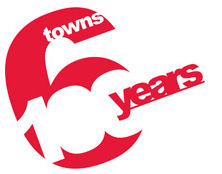31st March 1910 saw the federation of the
six towns to form the County Borough of Stoke-on-Trent
|
Stoke-on-Trent Local
History |
|
|
|
|
| Federation of the six towns 31st March 1910 saw the federation of the six towns to form the County Borough of Stoke-on-Trent |
![]()
![]()
![]()
next: Horace Barks
previous: Plant and Bennett
contents: Index page for
Federation


Federation article by local
historian - Fred Hughes
People who made the Potteries - Conservative Politics
|
It is fair to say the names that have hogged the celebrity list of politics in Stoke-on-Trent over the past century belong to the Labour Party. This is because Conservative politics have seldom been fashionable in the Potteries. One name, though, that gained notable esteem forty years ago, was that of a Conservative whose alternative strategy to Labour's plans to elevate the status of Stoke-on-Trent as a regional administration, certainly influenced the way we've been governed since. It was 1935 when self employed engineer, William Hancock, was first elected to the council. He had joined Hanley's Conservative Association five years earlier and straightaway declared war on what he saw as a Labour-controlled authority, stage-managed by trade unions, blocking Stoke-on-Trent's advancement to free-market economics.
In the first local elections after the war the anti-Labour Group put up 20 candidates calling themselves 'Progressives' which made no impact at all on Labour's political monopoly. Thereafter, Hancock continued to be Labour's bugbear using every opportunity to thwart what he saw as ineffectual plans for territorial expansion. He ran unsuccessfully for parliament but was compensated by becoming an alderman and being made Lord Mayor in 1961.
Rather than Labour's preferred boundary extensions Hancock advocated devolved satellite districts under a centralised civic administration. He also promoted the acceleration of private housing developments in order to attract a professional population with a useful by-product in increasing the Conservative vote. Labour's commitment to the improvement of social housing however was always going to frustrate his hopes of a middle-class Stoke-on-Trent. Yet in 1970 an element of chance gave Hancock a political leg up. That year the voting age was lowered to 18 with some 12,000 being added to the electorate. Labour, at the time, had one of its lowest ever majorities but was reasonably safe in holding the lion's share of aldermanic seats. The big election issue concerned plans to accommodate an overspill from Manchester's population enlargement. This was opposed by several Stoke-on-Trent tenant groups who recognised that it would give council-house priority to 2,000 Manchester tenants. Labour, nevertheless, saw advantage in increasing its population which could result in the City becoming a metropolitan district as summarized in the controversial Redcliffe-Maud Commission aimed at creating bigger unitary administrations. In simple terms - Stoke-on-Trent could qualify in becoming a new primary authority depending on its population and size; otherwise it would be absorbed within one of the newly-planned county councils. At the time Staffordshire County Council was Tory-controlled and Hancock saw the benefits in becoming part of it.
Labour turned nasty flinging accusations of betrayal and dishonesty at the non-political Independents as party politics awesomely came of age. But the optimistic Hancock administration was short-lived. In 1971, Labour roared back winning all twenty-five seats leaving the Conservatives with six councillors and the Independents with just two. The Manchester Overspill was quietly forgotten; but the Redcliff-Maud Report became the basis for the Local Government Act 1972 which relegated Stoke-on-Trent to a district council administered from Stafford from 1973 to 1997. Bill Hancock was one of two City Conservatives to win a seat on the new County Council which paradoxically soon became Labour-controlled. This was the end of his political career although he was given the Freedom of the City in 1974. He died in 1993 aged 95 no doubt wondering, as many still do, what Stoke-on-Trent might have been like if party politics had not intervened to stop a Manchester overspill that could have resulted in the City becoming a metropolitan authority instead of a district run from Stafford. |
![]()
![]()
![]()
next: Horace Barks
previous: Plant and Bennett
contents: Index page for
Federation